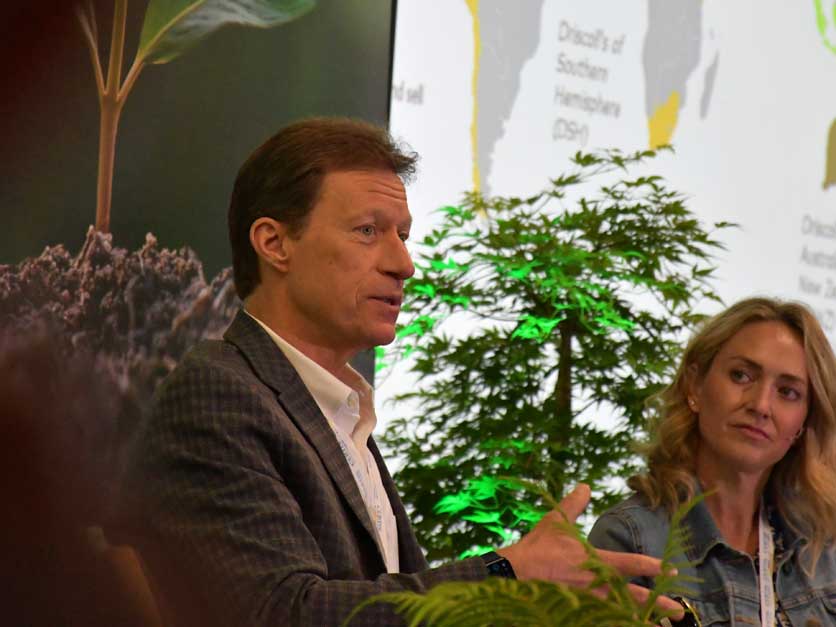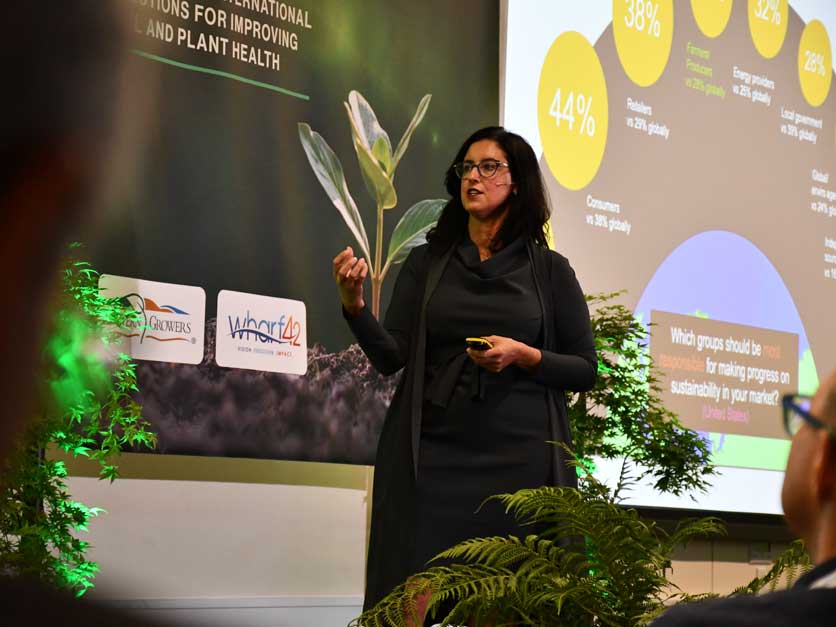The Western Growers Association (WGA) teamed up with an agrifood tech firm to launch the 2023 Salinas Biological Summit this week. The two-day conference connects startups with investors while spreading awareness among farmers of emerging alternatives to conventional pesticides, fertilizers and stimulants. The summit is a proactive approach to managing new policy and consumer expectations in California.
In January the Newsom administration released a strategic plan known as the Sustainable Pest Management (SPM) Roadmap, which outlines goals for eliminating controversial pesticides by 2050, replacing them with less potent alternatives. The Department of Pesticide Regulation (DPR), meanwhile, has been steadily layering in new regulations to further limit the use of fumigants, neonicotinoids and organophosphates.
“As much as we are dedicated to advocacy, to pressing public policy that is science-based, that is effective and that is commercially viable, sometimes we get dealt a different hand of cards. And that’s why we’re here,” said WGA President and CEO Dave Puglia in opening the summit on Tuesday.
While state and federal policies are setting new industry mandates, farmers are responsive to a changing consumer landscape. According to Sherry Frey, vice president of total wellness at NielsenIQ, consumer trends are putting a focus not just on what is in the product, but how it is produced and brought to market. The analytics firm has been tracking the “clean label” movement that markets products free from artificial ingredients, preservatives or pesticides.
 Scott Komar, Driscoll's
Scott Komar, Driscoll'sFrey is closely watching a bill progressing through the Legislature that has gained the moniker of a Skittles ban, since it targets ingredients found in common candy products.
“That puts a lot of attention, from a consumer standpoint, on ingredients,” said Frey.
She cautioned that everyone at the summit is a consumer and that sometimes “we're irrational, sometimes we don't always make sense with what we're doing and what we're choosing.”
To Puglia, the biologicals summit builds on the association’s decade-long drive to seek out new technological solutions to tackle environmental and labor challenges. That has opened a much broader discussion about agtech.
In 2017 WGA launched its Center for Innovation and Technology in Salinas to bring technology firms into the industry space. Last year it partnered with a French organization on the first robotics and automation conference dedicated to specialty crops.
To build the biologicals summit, WGA teamed up with a New Zealand-based agrifood tech consultancy, Wharf42. The aim of the conference is to pivot, adapt and to get ahead of “outcomes that are not of our choosing,” according to Puglia. He called it “truly thrilling” to have an opportunity to change the discussion entirely.
“The public policy arena is always going to push the envelope for us in California,” said CDFA Secretary Karen Ross. “We are the state with the highest population. We are the state that's most urbanized.”
Through the administration’s efforts to bring healthy, locally grown foods to schools and disadvantaged communities, Ross sees an opportunity to “truly connect agriculture and the production challenges that we face with the food that people eat.” She stressed that even though the state government “may seem like it is against you,” it is not and it needs partners to move its climate and sustainability goals forward.
“We need to be in it together,” said DPR Director Julie Henderson. “We can’t do this alone.”
She reiterated the importance of deepening the agency’s collaboration with multiple stakeholders to update and broaden the standard integrate pest management practices and to gain grower adoption.
“There's a tendency for folks to focus on the elimination [part of the SPM Roadmap],” said Henderson. “That transition really requires the availability of effective alternatives that people know how to use.”
Don’t miss a beat! It’s easy to sign up for a FREE month of Agri-Pulse news! For the latest on what’s happening in Washington, D.C. and around the country in agriculture, just click here.
The department has set a 2025 target for accelerating the state’s registration process for new products.
Pam Marrone, who is the CEO and founder of Chestnut Bio Advisors and has long been an influential pillar of the biologicals space, detailed the obstacles and opportunities ahead for market development. She expects the pace of growth for biologicals to match that of conventional pesticides within 20 years. She noted that every two years Brazil has been doubling the number of biologicals available to growers by approving new products within a year.
 Sherry Frey, NielsenIQ
Sherry Frey, NielsenIQ“They're eclipsing the U.S.—which used to be the top—because they've been registering one after the other, without sacrificing human health or environmental safety,” she said, adding that Brazil’s focus is on specialty crops while the U.S. is largely for row crops.
Marrone cited the reasons for such growth in demand are due to residue management, resistance management, increasing biodiversity, reducing greenhouse gas emissions and improving soil health. She also corrected the misconception that mainly organic growers use biologicals, noting that 70% are used by conventional growers.
Like Henderson and Ross, Marrone emphasized the need for more investment in education, cooperative extension and training, particularly for pest control advisors.
Scott Komar, senior vice president of global research and development at Driscoll's, was hopeful that strawberry growers will in time see more tools in their pest control toolkit with the shift toward more biologicals. Yet he cautioned that manufacturers have a critical bar to clear first by demonstrating the profitability to growers.
“We have a lot of growers who are ready to try something out,” said Komar, adding that adoption will flow better over time due to the potential benefits. “Ultimately, I think it's going to allow us to be much more adaptive to these different climates that we're in right now.”
For more news, go to: Agri-Pulse.com.


